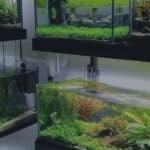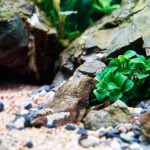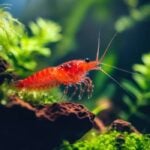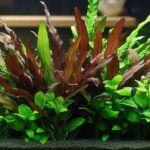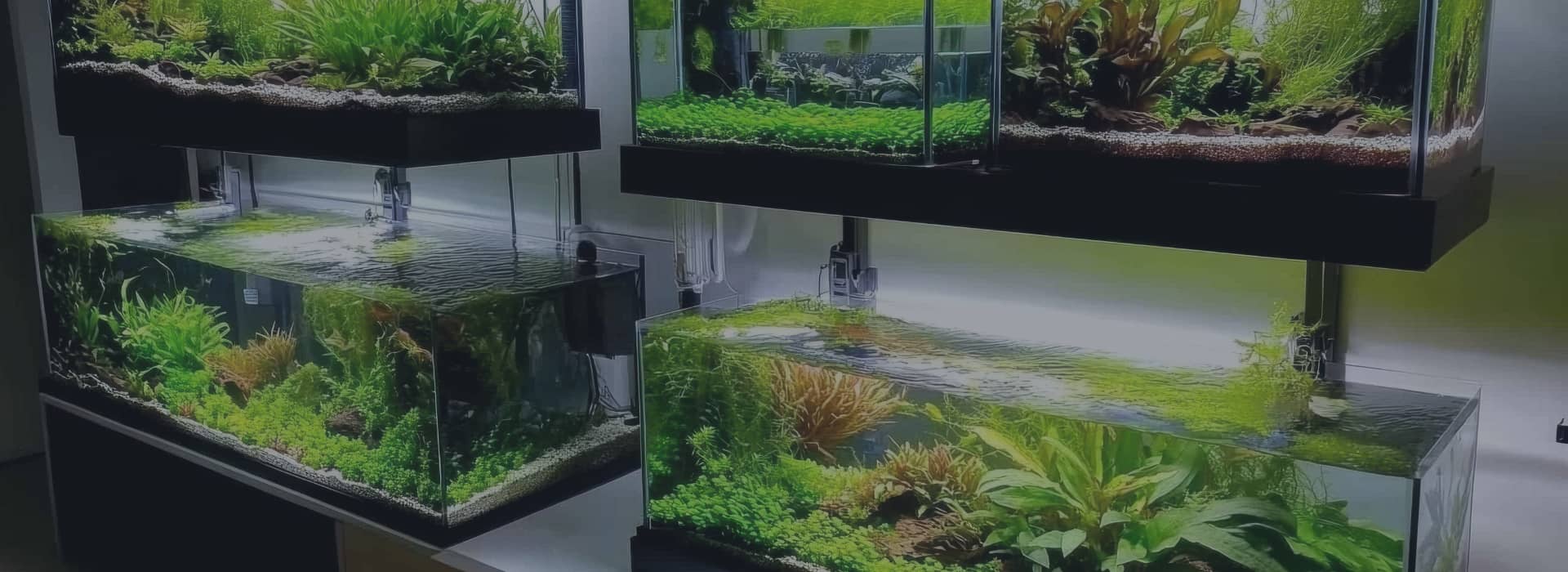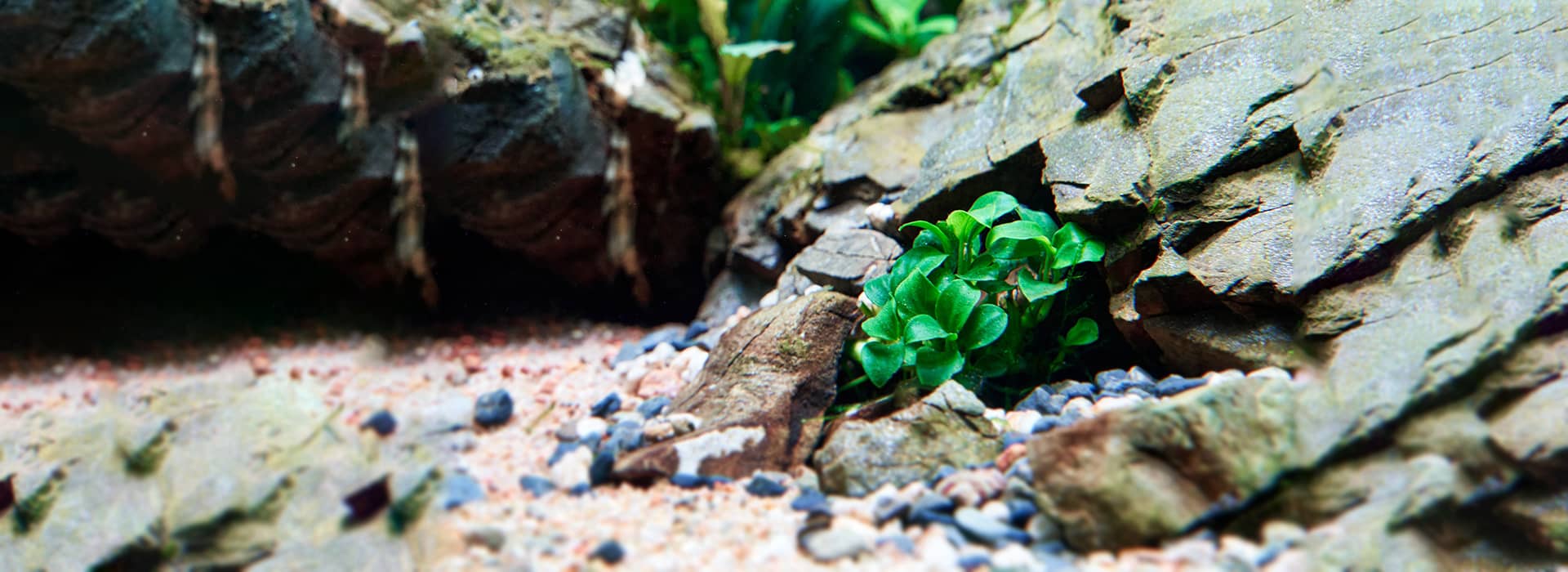Tetras are a diverse group of small, colourful freshwater fish belonging to the family Characidae. They are popular among aquarium enthusiasts due to their vibrant hues, peaceful temperament, and ease of care.
These small, peaceful fish are native to South American streams, including the Amazon, and thrive in soft water conditions with a lower pH.
Tetras are generally easy to care for, making them suitable for both novice and experienced fish keepers.
Tetra Species
1. Neon Tetra (Paracheirodon innesi): Neon Tetras are one of the most iconic aquarium fish, with their iridescent blue and red stripes that shine beautifully under aquarium lights. They are best kept in schools of six or more and thrive in well-planted tanks with subdued lighting.
2. Cardinal Tetra (Paracheirodon axelrodi): Similar to the Neon Tetra, the Cardinal Tetra boasts an even more vibrant colouration, with a larger portion of their body displaying a brilliant red hue. They are also schooling fish and enjoy similar tank conditions as Neons.
3. Black Skirt Tetra (Gymnocorymbus ternetzi): Recognizable by their dark colouration and long flowing fins, Black Skirt Tetras add a touch of drama to any aquarium. They are peaceful and do well in a community tank setting.
4. Ember Tetra (Hyphessobrycon amandae): The Ember Tetra is a smaller species, known for its fiery orange color. They are a peaceful and hardy choice for a community tank, especially one with live plants.
5. Rummy Nose Tetra (Hemigrammus rhodostomus): With their distinctive red noses and striped tails, Rummy Nose Tetras are a popular choice for adding movement and colour to an aquarium. They are best kept in schools and prefer stable water conditions.
6. Diamond Tetra (Moenkhausia pittieri): Diamond Tetras have a shimmering, diamond-like sparkle on their bodies, especially when mature. They are relatively easy to care for and can be a dazzling addition to a community tank.
7. Congo Tetra (Phenacogrammus interruptus): The Congo Tetra is larger than many other tetra species and boasts an array of colours with long, flowing fins. They are a peaceful species that does well in a spacious tank with plenty of swimming room.
8. Bleeding Heart Tetra (Hyphessobrycon erythrostigma)**: Named for the distinctive red spot on their sides, Bleeding Heart Tetras are a striking species that can add a pop of colour to your tank. They are peaceful but can be a bit larger than other tetras, so they require a bit more space.
Tank Setup
When setting up an aquarium for Tetras, it’s essential to consider their natural habitat to create a comfortable environment for them. The ideal temperature range for Tetras is between 22°C-26°C (72°F – 78°F), with a pH level of approximately 6.5 and water hardness between 4kH – 8kH. These conditions mimic the soft waters of the Amazon and help Tetras flourish.
When introducing Tetras to your planted aquarium, ensure that the tank has been properly cycled and that water parameters match their needs. Acclimating them to the tank by floating the unopened bag in the aquarium for 5-10 minutes allows them to adjust to the temperature gradually.
Tankmates
One of the most endearing qualities of tetras is their schooling nature, which not only provides a stunning visual display but also reflects their social behaviour in the wild. When kept in groups, tetras are known to exhibit more natural behaviours and appear less stressed, making for a more harmonious tank environment.
They can be housed with a variety of non-aggressive species, as they are not known to be territorial. However, it’s important to keep them in schools of at least 3 to 4 of the same species to ensure they feel secure and exhibit natural schooling behaviour.
Here are some suitable tankmates for tetras that can help create a vibrant and peaceful aquarium community:
1. Guppies (Poecilia reticulata)**: Known for their bright colours and easy care, guppies are a fantastic match for tetras. They share a peaceful temperament and similar water requirements, making them ideal companions.
2. Corydoras Catfish (Corydoras sp.)**: These friendly bottom dwellers are excellent for keeping the substrate clean and are known for their peaceful nature. They come in various sizes and patterns, offering a beautiful contrast to the mid-water swimming tetras.
3. Zebra Danios (Danio rerio): With their active swimming and hardy nature, zebra danios can be a great addition to a tetra tank. They are adaptable to various water conditions and are peaceful, making them suitable tankmates.
4. Harlequin Rasboras (Trigonostigma heteromorpha): These small, peaceful fish are known for their ease of care and compatibility with tetras. They prefer similar water conditions and are also schooling fish, which can add to the dynamic display in your tank.
5. Dwarf Gouramis (Trichogaster lalius)**: Dwarf gouramis are peaceful and can add a different shape and a splash of colour to your community tank. They require similar water conditions as tetras and are known for their gentle nature.
6. Platies (Xiphophorus maculatus & Xiphophorus variatus): Platies are another peaceful species that can coexist with tetras. They are adaptable and come in various colours, adding diversity to your aquarium.
7. Mollies (Poecilia sphenops): Mollies are peaceful fish that enjoy similar water parameters as tetras. They are livebearers and can add a lively dynamic to the tank environment.
When introducing new tankmates to your tetras, consider the size, temperament, and water parameter requirements of all species involved. Introduce new fish gradually and monitor the tank dynamics to ensure all inhabitants are getting along well.
Feeding
They typically eat a variety of foods, including flake, frozen, and live foods. Maintaining a balanced diet is crucial to keeping them healthy. Avoid overfeeding, as it can lead to poor water quality and health issues.
Tank Maintenance
Maintaining excellent water quality is paramount for the health of Tetras. They are sensitive to ammonia spikes and nitrite levels, which should always be at 0 ppm. Nitrates should be as close to 0 ppm as possible, with readings under 40 ppm being suitable for Tetra care. Regular water changes and the addition of aquatic plants can help manage nitrate levels.
Caring for Other Aquarium Fish
While Tetras are a joy to keep, there are countless other species that can share their home. Here are general care tips for a diverse aquarium:
Community Considerations
To ensure harmony in the tank, choose fish with similar water requirements and temperaments. Research each species’ needs before introducing them to your aquarium.
Feeding
Provide a balanced diet suitable for your fish’s various dietary needs. Some may require specialised foods, such as algae wafers for bottom feeders.
Tank Maintenance
Regular cleaning, water testing, and equipment checks are vital to prevent harmful fluctuations in water parameters.
Aquascaping
Include a variety of plants, rocks, and hiding places to mimic natural habitats and encourage exploration.
Frequently Asked Questions
Can I keep different species of Tetras together?
Yes, most Tetras can coexist peacefully. Just ensure they have similar care requirements.
What is the best way to acclimate new fish to my aquarium?
Introduce new fish gradually by floating their bags in the tank water for about 15 minutes, then slowly mix in small amounts of tank water over the next 45 minutes before releasing them.
How do I know if my fish are healthy?
Healthy fish are active, have vibrant colours, eat regularly, and don’t show signs of physical damage or abnormal behaviour.
Tetra Care Takeaways
Caring for tetras and other aquarium fish can be a rewarding experience that brings beauty and serenity to your home.
When considering tetras for your aquarium, research each species’ specific needs. While many tetras share similar requirements in terms of water quality and temperature, some may have unique dietary or environmental needs.
Additionally, always ensure that you are introducing tetras to a cycled and stable aquarium to prevent stress and potential health issues.
